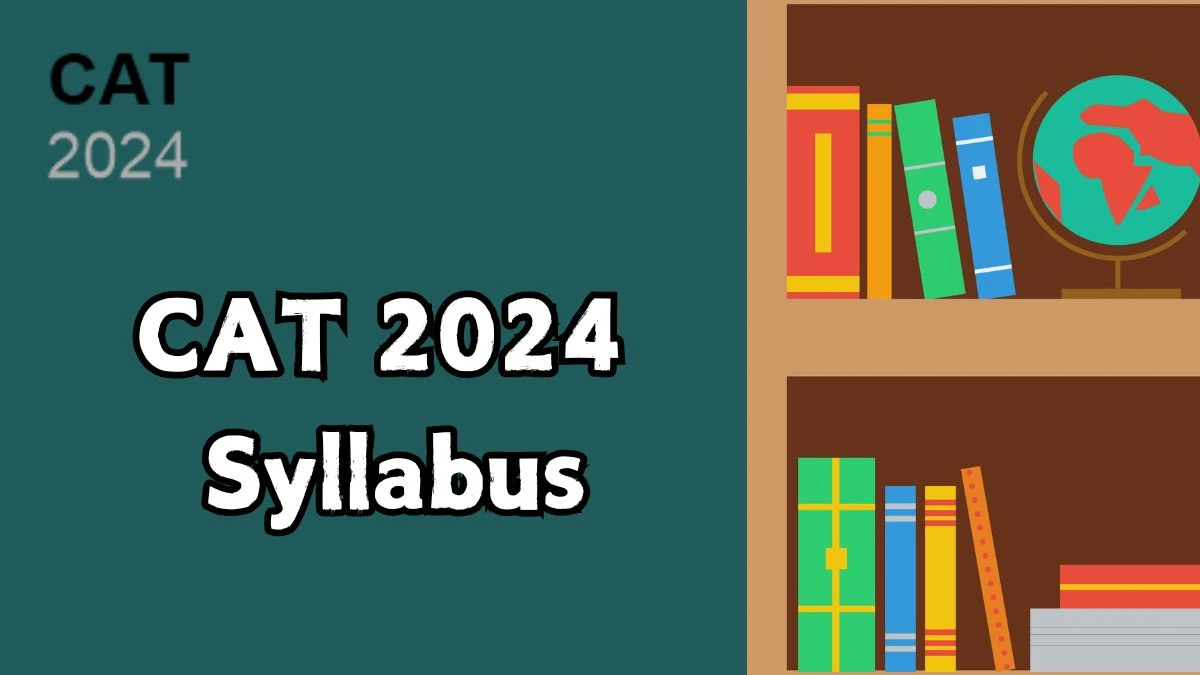- Rojgarlive »
- Education »
- CAT 2024 Syllabus at iimcat.ac.in Check and Download Details Here
CAT 2024 Syllabus at iimcat.ac.in Check and Download Details Here
by Keerthika
Updated Sep 17, 2024

CAT 2024 Syllabus at iimcat.ac.in
The CAT exam syllabus covers Data Interpretation & Logical Reasoning (DILR), Quantitative Aptitude (QA), and Verbal Ability & Reading Comprehension (VARC). As prescribed by the Indian Institutes of Management (IIMs), the CAT 2024 syllabus is recognized as one of the most challenging among MBA entrance exams in India. Key topics for CAT 2024 include algebra, geometry, arithmetic, vocabulary enhancement, reading comprehension, para-jumbles, coding and decoding, and series completion. The extensive nature of the CAT syllabus necessitates thorough and sustained preparation. For detailed information on the CAT syllabus and exam pattern, refer to the sections below.
Check - CAT 2024 Syllabus
|
Particulars |
Details |
|---|---|
|
Total Subjects |
3 Sections: Data Interpretation & Logical Reasoning (DILR), Quantitative Aptitude (QA), and Verbal Ability & Reading Comprehension (VARC) |
|
CAT Exam Mode |
Computer-Based Test |
|
Type of Questions |
MCQs |
|
Number of Questions in CAT 2024 |
VARC – 24 questions |
|
Duration of CAT Exam |
120 minutes (160 minutes for PwD Candidates) |
|
Each Section’s Duration |
40 minutes (53 minutes and 20 seconds for PwD Candidates) |
|
Medium |
English |
-
Reading Comprehension (RC):
-
Understanding Central Themes: Practice identifying the main ideas and themes of passages.
-
Details and Arguments: Focus on grasping specific details, facts, and arguments presented in the text.
-
Tone and Style: Analyze the tone, style, and purpose of the passage.
-
Inference: Develop the ability to draw conclusions and infer implied meanings.
-
Question Answering: Practice answering questions based on the passage content.
-
-
Vocabulary:
-
Synonyms and Antonyms: Learn a wide range of words and their meanings.
-
Word Usage: Understand contextual meanings and usage of words.
-
Analogies: Solve questions based on word relationships.
-
Idioms and Phrases: Familiarize yourself with common idiomatic expressions and their meanings.
-
-
Grammar and Usage:
-
Sentence Correction: Focus on identifying and correcting grammatical errors.
-
Error Spotting: Practice spotting grammatical errors in sentences.
-
Sentence Completion: Work on completing sentences accurately.
-
Grammar-based Questions: Study parts of speech, tenses, and subject-verb agreement.
-
-
Para Jumbles:
-
Rearranging Sentences: Practice rearranging jumbled sentences to form a coherent paragraph.
-
Logical Sequence: Develop the skill to identify and construct the logical flow of sentences.
-
-
Critical Reasoning:
-
Argument Evaluation: Focus on strengthening and weakening arguments.
-
Assumptions and Inferences: Practice identifying assumptions, making inferences, and drawing conclusions.
-
Logical Deductions: Work on logical reasoning and cause-and-effect relationships.
-
-
Paragraph Completion:
-
Completing Paragraphs: Practice selecting the most appropriate sentence to complete a paragraph logically and cohesively.
-
-
Summary:
-
Condensing Information: Learn to summarize the main ideas of a passage concisely while retaining essential information.
-
-
Reading and Comprehending Different Text Forms:
-
Varied Texts: Practice with essays, articles, editorials, and literary excerpts.
-
Understanding Styles: Develop the ability to understand and interpret various writing styles and textual structures.
-
-
Contextual Understanding:
-
Word and Phrase Usage: Focus on understanding the context of words, phrases, or sentences within a passage.
-
4o mini
CAT 2024 Syllabus? -FAQ
The CAT 2024 syllabus is divided into three main sections: Data Interpretation & Logical Reasoning (DILR), Quantitative Aptitude (QA), and Verbal Ability & Reading Comprehension (VARC).
Focus on data interpretation (tables, charts, graphs), logical reasoning (puzzles, seating arrangements, blood relations), and problem-solving skills involving data analysis.




